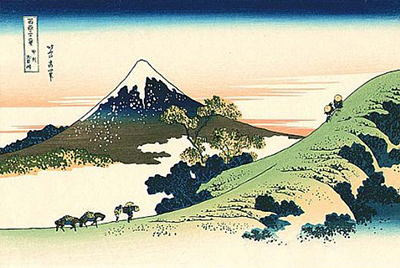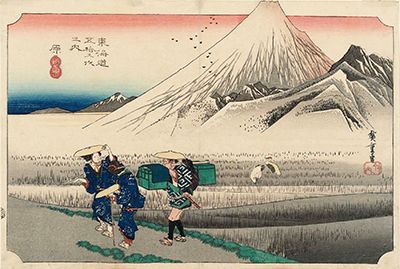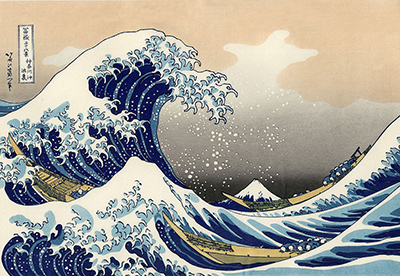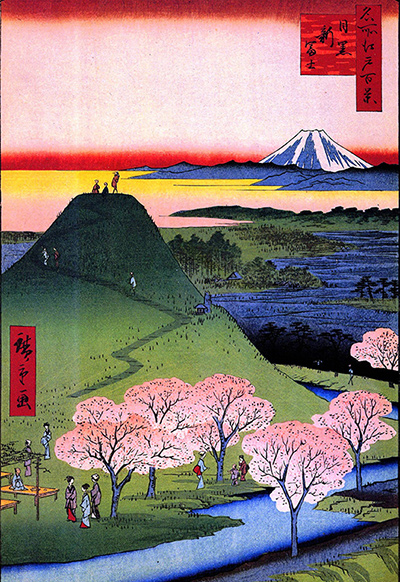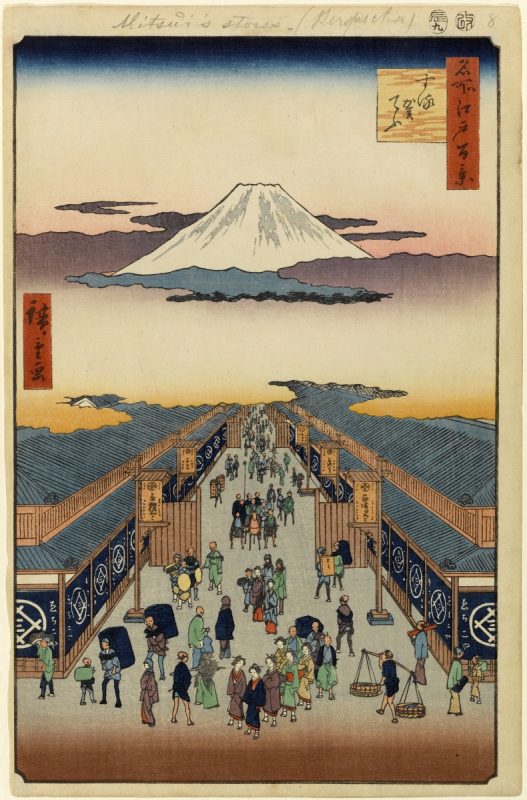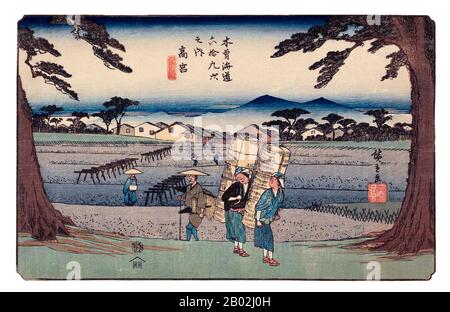Japanese Painting
Japanese Posters
Japanese posters make stunning additions to your home or workplace, making the best of classic, traditional art at it’s finest. The colours and subjects found in the Japanese art from the likes of Hiroshige are ideally suited to poster reproduction formats.
Posters also have the advantage of being very cheap to buy, meaning that you can quickly add many right across a room for a small investment, perhaps even buying enough to rotate them to keep your display as fresh as possible. The tones used in the Great Wave of Kanagawa, as an example, draw in perfect shapes for posters, with bold blocks of colour which have clarity from a good distance. A couple of Hiroshige paintings on your wall would perfectly complement a modern style home, or perhaps even a standard student dorm. Those looking for inspiration around which artwork to pick should concentrate on the movements of the 17th to 19th century, when Japanese art was at its best. This period gave us many of the household names that we continue to enjoy today, such as Hiroshige and Hokusai.
There are many who do not follow art particularly closely but have a certain taste which they apply to interior design when decorating their homes. Bright colours, elements of nature and something that feels contemporary is common, and the art featured within this website will often meet that challenge. Even the art of centuries back can somehow feel sufficiently modern, because of the uplifting colour schemes and also the depictions of plants and flowers in a way that was not really seen to the same degree in Europe until around the middle of the 19th century. As we try to connect with nature once more, having lost our way to a certain degree, these types of posters would ideally suit most homes and allow us to connect our garden with our indoor spaces.
There were often very precise lines used within Japanese art, such as with the Ukiyo-e era, and this clarity is well suited to reproduction. Posters and prints may often be smaller than the original, and so one needs to consider how well any artwork will translate into these copied versions. If you make a comparison with traditional European art, for example, you will find that Renaissance and Baroque depictions tend to be dark and part of large scale murals which would then be lost when reduced to a far smaller scale. The darker tones also fail to add excitement and energy to your home, even though the original paintings may have been completely breathtaking when viewed in person. This precision can partly be explained by how the Japanese would write for many centuries using brushes, ensuring that they were all brought up with a natural ability in using these tools and also were required to be accurate with their usage of them.
Popular Japanese Art Posters
We have selected below some of the most frequently bought posters from a variety of different Japanese artists. These are stunning pieces that would light up any room, for any budget. The beauty of posters is that they are entirely affordable, even in large sizes, meaning you can even buy extra ones for the purpose of rotating them from time to time. There are trends, certainly, with those buying posters such as these, with particular themes being more important than others. For example, close up depictions of flowers are really popular and offer a quick and elegant option for your home. Landscapes are also always popular, and the added Asian touch brings an interesting dimension. We have all seen Mount Fuji appear in endless prints and this location alone holds a magical feel that is ideally suited to inspiring artists all around the world. There are many more areas of the country that can also provide splendour to your homes, with the Ukiyo-e period being a good place to discover many of these.
Buying Japanese Posters
There are many different businesses offering Japanese art reproduction posters, but which to go for? Many stores exist on Amazon as third-party sellers, for example, and it is important to study reviews of their products prior to selecting one over another. Thankfully, there is a positive effort to add reviews wherevever possible, normally from genuine customers who have already purchased similar items themselves and these will give you a good guide when faced with uncertainty. Another retailer to consider would be Art.com who specialise entirely in art products and have a wealth of experience in delivery high quality options. Additionally, their database of art from which you can choose is vast, running into the hundreds of thousands and you may well find something there that you had never seen before and perhaps even prefer to the original ideas that you had. Either way, whilst researching the retailers and artworks separately, you may discover something even better and so it is worth taking the time to browse online in detail.
What about Japanese Art Prints?
For those with larger budgets, a framed print may be the best option for you. These are better at protecting the printed artwork and also look more professional when hung up in your home. Generally speaking, companies that offer posters will also offer prints as well, with a good range of qualities available, with a range of different ink and paper as well as a number of different frames to pick from. Additionally, you might consider a small inlay card which sits between the print and the inside of the frame in order to allow the stunning artwork to breathe in space. These will inevitably be more expensive than posters but are well worth the extra money if you have it to spare. Normally the same artworks will be offered in all of these different finishes, leaving you with two many choices, which painting to pick and in which format. Prints with transparent covers can last longer, with the colours not fading quite as quickly, though much will depend on where you hang each piece.
What about Related European Artists?
We are all aware of the incredible exchange of ideas between the East and West over the centuries, going way beyond the art world. More specifically, the European artists of the 19th century would draw on ideas from imported Japanese woodblock prints and this would help to influence the Impressionist movement. Within the 20th century this connection would become even stronger, with a two-way exchange constantly inspiring new artists to fuse different creative ideas and techniques together. We know that Monet and Manet would collect prints and there was also a considerable influence from Asian artists upon Henri de Toulouse Lautrec as well. Another who adored art from this region was Vincent van Gogh, who left behind a plethora of bright artworks which included Portrait of Père Tanguy which oozes influence from Japanese art and culture.

